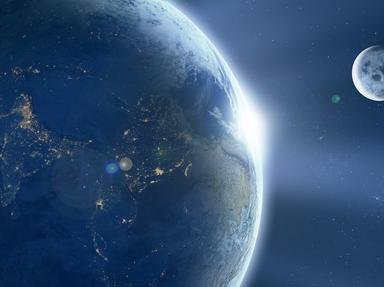Quiz Answer Key and Fun Facts
1. Between 1969 and 1972, six different space missions landed on the Moon and gathered lunar samples. What was the name given to these US space flights?
2. The Soviets made three missions to the Moon. They also brought back lunar samples and shared them with the US. Were the Soviet missions manned or unmanned?
3. The lunar samples consist of lunar rocks, core samples, pebbles, sand, and dust from the Moon's surface. How many total pounds were brought back from the six US missions?
4. Some of the lunar samples are dark-colored fine-grained igneous rocks. They are rich in iron and magnesium. This is a very common rock on Earth. Most of Hawaii is this type of rock. What type of rock is it?
5. Most of the Moon's rocks are hard, solid rocks that have broken up and formed back together in different combinations. This is because the Moon was constantly changing from the impact of meteors. What are these rocks called?
6. New minerals were discovered on the Moon. The best known one was named after the astronauts Armstrong, Aldrin, and Collins. What mineral is this?
7. Is lunar soil organic enough to support plant-life?
8. In 1979 a lunar facility known as Building 31N was constructed to provide permanent storage for the lunar sample collection. Where is it located?
9. The oxygen and humidity in the air changes the chemical composition of lunar rocks. That is why they are kept in special cabinets filled with what gas?
10. People were worried that moon rocks might contain microbes and germs that would contaminate the Earth. Do they?
Source: Author
moonrockie
This quiz was reviewed by FunTrivia editor
rossian before going online.
Any errors found in FunTrivia content are routinely corrected through our feedback system.

